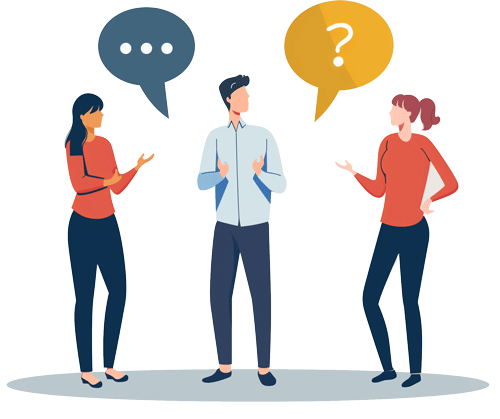Study RESULTS
The study involved participants engaging in a 30-day challenge of daily cold exposure through ice baths or cold plunges, lasting 3 to 8 minutes at temperatures between 37°F-46°F or 3°C-8°C. Data was self-reported, using a Likert scale from 1 (strongly disagree) to 7 (strongly agree) across various health and psychological metrics. The analysis includes both quantitative data and qualitative responses from 124 participants. Since the goal of the study is to measure the impact of doing a certain activity for a month quantitative data is presented for participants with high adherence rates (90%+ challenge completion).
Qualitative Analysis - analysis of the open-ended responses
An analysis of the open-ended responses revealed several recurrent themes:
1. Psychological and Emotional Adaptation
- Enhanced Mood, Reduced Stress, and Mental Clarity: Responses repeatedly emphasize improved mood, decreased stress, and a calmer state of mind following cold exposure. Participants noted that even on particularly challenging days, the immersion helped “clear scattered thoughts,” relieve anxiety, and “beat the January blues.” In the extraordinary responses, several individuals described profound emotional releases—such as unexpected catharsis (a session that brought on tears) and deep emotional breakthroughs—suggesting that the challenge may catalyze not only mood elevation but also significant emotional processing.
- Increased Mental Resilience and Discipline: A recurring narrative is that of overcoming an internal “voice” of hesitation. Respondents reported that despite initial resistance, repeated exposure built mental toughness and self-discipline. Some noted that even extreme situations (for example, cold swimming at midnight or in harsh natural settings) became manageable over time. One participant described the challenge as planting their “foot on the gas,” marking a substantial shift in their ability to hold their consciousness in the present and overcome self-doubt.
- Mindfulness and Altered Self-Perception: Beyond mood improvements, several participants recounted experiences akin to meditative states—enhanced focus, heightened awareness, and even dissociation from habitual thought patterns. These experiences suggest that repeated cold exposure may act as a catalyst for mindfulness, with some individuals integrating these benefits into broader wellness practices.
2. Physiological and Recovery Benefits
- Improved Cardiovascular and Thermoregulatory Adaptation: Many responses noted a dramatic drop in resting heart rate and improved circulation, with some participants claiming measurable changes in blood markers (such as increased leucocytes and hemoglobin). Several respondents also described faster re-warming after immersion and a reduced sensitivity to cold, indicating an enhanced thermoregulatory response developed over the challenge.
- Enhanced Sleep and Physical Recovery: Consistently, participants reported better sleep quality, faster recovery from physical exertion, and a reduction in muscle soreness or chronic pain. Extraordinary feedback also pointed to unexpected benefits, such as slight fat loss (attributed to the energy expended warming the body) and improvements in conditions like tendinitis or Reynaud’s symptoms.
- Adaptation Amid Adversity: Not all physiological responses were uniformly positive. One participant reported headaches that led to temporary cessation, suggesting that for some, the balance between challenge and recovery may require careful calibration. Nonetheless, the overall pattern suggests robust physiological adaptation for most individuals.
3. Behavioral and Habitual Shifts
- Establishment of a Healthy Routine: Responses underscore that the challenge helped many participants forge new habits and reinforce discipline. The daily commitment—notwithstanding the mental or physical barriers—translated into improved adherence to healthy routines. For some, this even spurred additional physical activities (e.g., push-ups) and integration with other wellness practices like meditation.
- Overcoming Fear and Discomfort: A striking element in the extraordinary experiences is the narrative of overcoming acute challenges—whether it was breaking through thick ice with a hammer, facing the fear of darkness at an 8pm river plunge, or enduring the discomfort of extreme cold. Such episodes not only built self-confidence but also instilled a belief that they could “do more than [they] were aware of.”
4. Social and Community Engagement
- Enhanced Social Connectivity: The shared nature of the challenge provided participants with a sense of community. Several responses mentioned the benefits of social accountability and the positive influence of participating in a group, whether by inspiring others or by forming new, supportive social networks. This collective experience not only bolstered individual commitment but also contributed to a shared sense of achievement and well-being.
- Inspiration and Role Modeling: Beyond individual gains, some participants reported that their experiences led them to initiate community groups and inspire peers to try cold exposure. This ripple effect highlights the potential for such challenges to foster broader health and wellness movements within communities.
Summary and Conclusions
Overview: This self-reported study of 30 consecutive days of cold exposure (ice baths or cold plunges at 3–7°C for 3–5 minutes) suggests that regular, short-term cold immersion can yield significant perceived benefits in both physical and psychological domains. Despite the inherent discomfort and occasional mild adverse effects, the overwhelming majority of participants reported improvements in energy, fitness, mood, and sleep—coupled with high adherence and a strong intention to continue the practice.
Key Observations:
- Robust Self-Reported Benefits: Participants rated improvements in physical health and mental well-being highly. The convergence of positive ratings across multiple health domains suggests that the cold exposure protocol might enhance recovery, bolster mental clarity, and reduce stress levels.
- Balancing Challenge and Reward: While the challenge was often perceived as difficult, the high enjoyment ratings and willingness to maintain the habit indicate that the benefits may outweigh the initial discomfort. This balance is critical in understanding adherence in behavioral health interventions.
- Minimal Adverse Effects: Adverse effects were infrequent and mild. When reported, these did not seem to detract significantly from the overall positive impact of the practice.
- Social and Behavioral Dimensions: The qualitative feedback reveals that, beyond physiological effects, cold exposure may promote mental discipline, emotional resilience, and social connectivity. These aspects are vital in understanding how challenging practices can foster broader lifestyle changes and community engagement.
Limitations:
- Self-Report Bias: The reliance on subjective self-reported measures (Likert scales and open-text responses) may introduce bias.
- Heterogeneity of Protocol Implementation: Slight variations in adherence, individual water temperatures, and baseline fitness levels could confound the interpretation of results.
Frequently asked questions
 Karol Banaszkiewicz, our founder, is a seasoned technologist and lifelong health-hacker who noticed a glaring gap in how we track the real effects of daily routines. Driven by a passion for data-backed self-improvement, he committed his own time and resources to launching TheChallenge.Org—to rigorously measure how habits shape our physical and mental well-being.
Karol Banaszkiewicz, our founder, is a seasoned technologist and lifelong health-hacker who noticed a glaring gap in how we track the real effects of daily routines. Driven by a passion for data-backed self-improvement, he committed his own time and resources to launching TheChallenge.Org—to rigorously measure how habits shape our physical and mental well-being.
